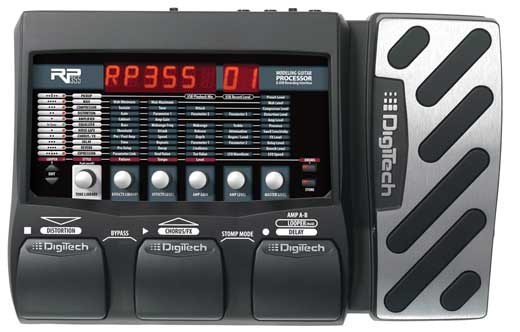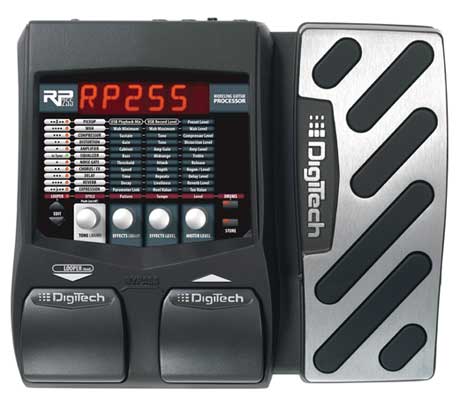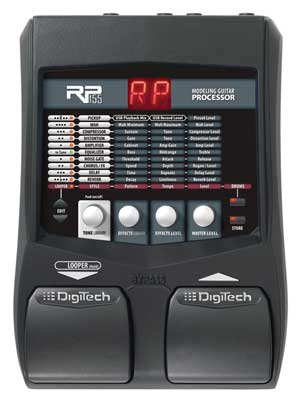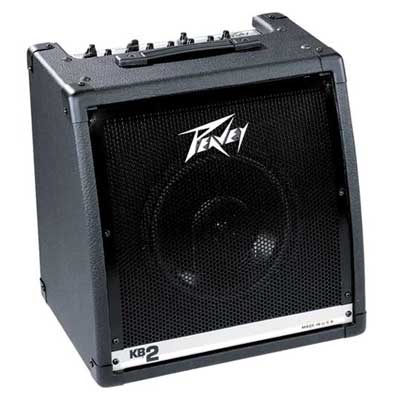HUNTER’S PATCH SET FOR DIGITECH RP!
“Around $350 buys an RP350/355, an Audix Fireball V mic and impedance convertor and Richard Hunter’s patches. I can’ see any similar investment which provides such a range of quality harmonica sounds. I highly recommend them.”
Tony Eyers
“Richard’s patch set for the RP 360 is so, so good!”
Ross Macdonald, www.sassparilla.info
PLEASE READ THIS! As of this writing in April 2023, Digitech has dropped support for the RP series devices. Among other things, that means that the software used to load patches into an RP device will receive no updates, and the software is no longer available at Digitech’s site. We have copies of the system files that support Digitech RP devices, and we’re glad to share them, but we can’t take any responsibility for the functionality, given that an operating system update could make that software unusable. Accordingly, as of April 2023, we are making our patchsets for Digitech RP available for free at the user’s risk.
There’s no more economical way for a harp player to add a huge assortment of high-quality sounds to a stage or studio setup than a Digitech RP with Huntersounds patches in it! Start with a half dozen each of great reverbs and great delays — as good or better than dedicated reverb or delay units costing as much or more than an RP device. Add amplifier and cabinet modeling based on dozens of well-known amplifiers, pitch and modulation effects, distortions, and more. You get the picture: this thing rocks. But out of the box, it’s set up for guitar, not harmonica, and it’s not easy to figure out how to make it work for harp. That’s where we come in.
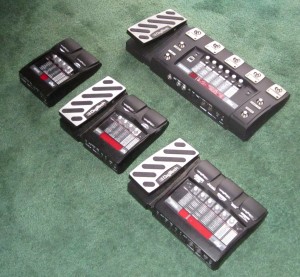
- What’s a Huntersounds patch set for Digitech RP?
- Check out our reviews!
- Check out the sounds!
- Frequently Asked Questions: which RP to buy, what other gear you’ll need, how to record with an RP, and more
The Huntersounds patch sets unleash the power of the Digitech RP for harp
Richard Hunter’s Huntersounds patch sets for the Digitech RP series devices turn your Digitech RP 150, 155, 200/200A, 250, 255, 350, 355, 500, 1000, or 360 into an incredibly powerful harmonica setup for stage and studio.
You get dozens of “patches” (pre-configured sound setups) for your Digitech RP 150, 155, 250, 255, 350, 355, 500, 1000, or 360/360XP in both single patch and bulk load format, ready for loading into your RP via a USB connection to your computer. (Note: the RP200/200A have no USB connection, so patches have to be entered by hand; we supply a spreadsheet that contains all the settings.) These are EXACTLY the same sounds used by Richard Hunter on his recordings and performances, and they cover everything from simple reverbs and delays only to massive amped blues and rock sounds, with and without a range of ear-catching effects like vibrato, rotary speaker, and pitch-shifting.
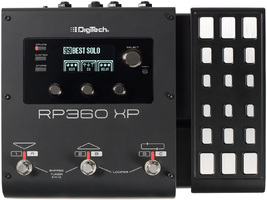
The emphasis in our patch sets is on sounds that harmonica players can use immediately in a wide range of styles, and we’ve tweaked every patch over and over to yield the maximum volume and tone without feedback. The result is a big batch of loud, bold, beautiful sounds for harp that sound at home in both traditional and very modern styles. There are amped-up Chicago blues setups, big low octave doubles that transform the harp’s sound and weight, organ-style patches with reverb and rotary speaker or vibrato FX, envelope filters and wah-wahs for tons of waka-waka fun, smooth, sweet reverbs and delays, and more, all of it immediately usable on stage and in the studio. (One thing a Digitech RP won’t do is run on batteries. If you need a device that runs on battery power, check out our patch set for the Zoom G3/G3x.)
Our latest RP500, RP1000, and RP360/360XP patch sets include 50 great patches. The RP350/355 sets includes 35 original patches, and the RP250/255 sets include 30 original patches, again laid out twice to make navigation and experimentation easier. You get all this for a dollar a patch! (We know that’s a bargain. Hey! We want our sounds in your RP.)
You can download a complete current layout and description of each of our latest patch sets for Digitech RP250/255/350/355/500/1000/360 by clicking on one or more of the links below.
Download Huntersounds v18 RP360/360XP patch List
Download Huntersounds v17 RP1000 Patch List
Download Huntersounds v18 RP500 Patch List
Download Huntersounds v16 RP355 Patch List
Download Huntersounds v16 RP350 Patch List
Download Huntersounds v16 RP255 Patch List
Download Huntersounds v16 RP250 Patch List
Check out the Rave Reviews
Check out these rave reviews by world class stage and studio pros Rob Paparozzi and Steve Baker, this total thumbs-up by Australian harp guru Tony Eyers, and these raves by more of the musicians using our RP patch sets on stage and in studio!
Also check out this live video of Steve Baker in performance with his band Opportunity, where he’s playing an Ultimate 57 mic through the Digitech RP255 running my patchset.
Check out the Sounds
Here’s a short clip of us playing a Bottle o’ Blues mic into our RP355 running a blackface deluxe amp model with slapback delay and reverb, recorded live with no editing, overdubs, or post-recording processing. Sure sounds like the real deal to us…
Bottle o’ Blues mic with RP355 Blackface Deluxe
Want more? Take a listen to our RP150/155 patch set samples! This is the low end of our patch set line, and we think the thing sounds amazing.
Still more, you say? How about samples of all the patches in our latest RP250/255/350/355 set.
Dat’s all we got, man, hope it’s enough for ya… Actually, just about every piece I’ve recorded anywhere in the last few years came through a Digitech RP first, so if you want to hear more of the RP in action, check out my recordings at this site.
We make it easy
Each patch set ships with a full set of documentation that describes every patch in the bulk load set, with single patches organized by sound category (such as FX, Blues, Clean, Pitch, and so on). All sets ship with a full set of instructions that tell you how to load the patches into your RP and set the RP up for performance. The entire collection of patch files weighs in at less than a megabyte, so it will download easily even on a dial-up Internet connection. All buyers also get a year of FREE updates to the patch set, meaning that every time we add or update a patch in the base set during your first year as a licensee, we send it to you. (NOTE: as of October 2015, we are no longer developing new sounds for the RP 150/155/250/255/350/355, all of which have been discontinued by Digitech. We will continue to sell and support our current patch sets for these devices.) Finally, we provide email support for our users. Our goal is to get you up and running with your RP, making great music, as quickly and easily as possible.
At this point, we ask that you read some legal stuff related to the patchset. You will need to agree to these terms before your online purchase can be completed.
FAQ
Q: Which Digitech device should I buy?
A: First, note that whatever device you buy, you can certainly buy it used, which will save money without necessarily increasing your risk. All of these devices are readily available on the second-hand market; kids (or their parents) buy them, try them, can’t figure them out, and get rid of them, so there are plenty out there for sale in good-to-great condition (and I’m here to help you figure them out). We own one of every device we make patches for, almost all of them were bought as factory seconds or used, and they’ve all been working fine for years. (We got the RP150 from Guitar Center for $25 shipped, as opposed to the original price of $100.) So when you’ve figured out your budget, by all means check eBay and Guitar Center to see what’s on offer there. Look for dealers with good feedback who offer warranties, even short ones. (And it’s worth repeating one more time: if you anticipate that you’ll need to run on battery power, like in situations where quick setup is important and wall power might not be available, consider our patch set for the Zoom G3/G3X.)
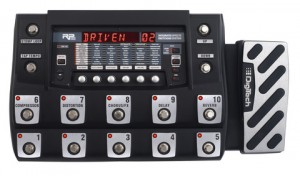
In terms of functions and features, the RP1000 is the biggest and baddest device Digitech makes. However, it’s also Digitech’s largest and heaviest (10 pounds, 19.5 inches wide), least portable, and most expensive device, and its output is extremely hot, meaning that you need to be careful about setting the master volume level when you connect to an amp or PA. We’ve addressed the output level issues in our v18 patch set for the RP1000, and there’s no question that the RP1000 sounds great.
However, the RP500 sounds exactly like the RP1000, the RP360/360XP sounds a little bit better, they’re both more portable and lower-priced, and they have all the same amp models and FX as the RP1000. If you don’t need the amp loop or FX loop hardware functions the RP1000 offers, our recommendation to harp players is to buy either the RP360/360XP or RP500. (See this post for a discussion of the relative merits of the RP500 and RP355, and this one for a discussion of how we choose between the RP500 and RP360.) We definitely recommend the RP500 or RP360/360XP, followed by the RP355, above the RP255 and lower models, because:
The RP360/360XP is Digitech’s latest amp modeler, and it definitely sounds better than any other RP–more colorful, more detailed, more ear-catching. But the RP500 is very close in terms of sound quality, with little or no audible difference most of the time, and all the same amp models, FX, and programmable parameters (though the RP500’s order of FX is fixed, and a 360 can put any effect in any order). The 500’s many dedicated footswitches make it better suited for live performance than the RP360/360XP, particularly if you (like us) find yourself changing tones frequently, especially in the middle of a song.
If you want to perform with the unit and have the space onstage and in your carry kit for an RP500, that’s what we’d go with; in fact, it’s what we do go with whenever we can. As of October 2015, used RP500s in good-to-great condition are selling at guitarcenter.com in the neighborhood of $150, and new for $200; those prices are just about equal to the new and used prices for the RP360XP.
Like we said before: every harmonica track on “The Lucky One” was recorded with an Audix Fireball V mic through a Digitech RP500 straight to the board.
Check it out on Amazon and iTunes!
If you’re going with the 360, we strongly recommend that you pitch in the extra $50 for the 360XP–once you’ve heard what you can do with the expression pedal in the 360XP, you’ll wonder how you ever managed to perform without it.
Our third choice would be an RP355 or a used RP350, which has almost all the features of the RP355. Both devices sound very good, and they offer a lot of amp models and FX that you don’t find in the lower models. Both have been discontinued by Digitech, but can still be serviced by Digitech dealers. Sound-wise, the RP350 is identical to the RP355, except for the few additional amp, cabinet, and FX models in the 355 (not that those few are necessarily insignificant). If money is short and you want almost everything you can get in a 355, a used 350 offers lots of bang for the buck. However, with used 355s going for much less than $100 as of this writing, I’d probably look there first, knowing that the device would be at least a few years newer than a 350 (and knowing also that the 355 has the incredible FX25 autowah model and Digitech BlackBass amp model in it).
UPDATE: As of October 2015, Digitech has discontinued the RP355, RP255, and RP155. Parts will still be available for years, of course, and plenty of used devices will be out there at attractive prices for pieces in good to great condition, if you want one for a primary or backup–and of course you can load my patches into any of these devices anytime. All of these RPs remain good choices for performance tools and outstanding choices for recording tools, but we do not develop new sounds for discontinued devices. That said, we expect that our current patch sets for these devices will remain best-in-class, and we will certainly make them available and support them for the foreseeable future.
If money (or space onstage) is tight, an RP255 or 250 will work fine. They don’t have every last one of the cool amp models and FX from the RP350/355, but they’ve got all the ones we use for our patches most often, AND an expression pedal, which is the most important hardware feature of the RP350/355. We’ve used our RP255 on gigs and in the studio with fine results; we actually recorded harp tracks for the BBC’s big-budget series “Copper” with our RP255.
If money or space onstage is REALLY tight, we recommend an RP150 or 155. Those devices don’t have an expression pedal, but the sound engine is the same as the one in the RP255 and RP355, and it’s got all the amp models and cabinets we use for the vast majority of our patches, PLUS all the reverbs and delays we use most often. We really love the sound of the 150/155! It works every bit as well as the bigger devices as a computer audio interface too, and we’ve seen them on guitarcenter.com selling in good condition for $25. However, if you want to change sounds frequently in your songs, you’re really better off with a 255 at least–that two-digit display in the 155 doesn’t tell you much about the nature of the sound you’re about to switch to. (And did we mention that the 150/155 don’t have an expression pedal, but the 255 does? You can do a lot of very cool stuff with that pedal.)
Finally, if you’ve got an RP200 lying around and you want to make use of it, go for it. It has no USB connection, so you have to enter the patch data by hand (which takes an hour or so), and you can’t use it to record directly to your computer, which you can do on any of the other RPs. (An RP with USB is a big bargain just for that 24-bit computer audio interface.) That said, it certainly sounds good (except for the reverbs, which are just barely good enough for live work). Just keep in mind that if the thing breaks (which happens sometimes with a chip-based device that went out of production over ten years ago), you’re going to have to re-enter your patch data by hand into another RP200 if you want to keep using those sounds. Trust us when we say that the USB connection with the newer RPs pays for itself fast if you’re in that kind of situation.
Q: What else do I need besides the patch set?
A: You’ll need:
In other words, lots of mics will give you good sounds with the RP–though of course different mics sound different, just as they would with any amp. As an example, Steve Baker sounds pretty damn blue in this clip playing his bullet mic with CR element through an RP255 and our patch set, don’t you think?
If you can’t find a KB-2 or other keyboard amp you like, there are plenty of other options. We’ve played through powered PA speakers from Mackie, Peavey, and others that sound great. Peavey offers a powered PA speaker with a 12″ woofer, 100 watts of power, and three inputs with individual volume controls for about $340. Mackie offers a very nice speaker with similar specs for about $300. Again, look for something with at least a 10″ speaker and 100 watts of power. A powered PA speaker (or two for a stereo setup) and an RP is a powerful, versatile, and lightweight setup for most gigs.
PLEASE NOTE: in order to use our patch sets, you will need to extract the patches from a ZIP file, and download and install the Xedit or Nexus (for the RP360) application and the drivers for your RP device (as appropriate) from Digitech.com. (No drivers are required for the Mac–it just recognizes the device.) If you’ve ever installed any kind of software on your computer before, then you probably know how to do this. If not, then you need to get someone to help you. Anyone who’s moderately skilled in using their computer should be able to guide you through the process, which takes less than 10 minutes if you know what you’re doing. WE DO NOT PROVIDE BASIC COMPUTER SUPPORT.
You do NOT need an external preamp for input to the RP. The RP will work fine with a mic at the input. You do NOT need a direct box (DI) to connect the RP to your amp or PA unless the cable run from the RP is longer than 50 feet (20 meters).
Q: Can the patches be converted to work with other Digitech devices, like the RP80, RP200, or Vocal 300?
A: Unfortunately, no. Digitech’s devices are pretty feature-specific, and there’s no automated way to convert from the RP150/155/250/255/350/355/500/1000 to other devices they offer. It is possible to convert patches from one of these devices to another, by hand or by using Digitech’s utility program, but there is no way to do an automated bulk load conversion from one device to another, so you’ve got to do the conversion patch by patch, which takes lots of time.
Q: What styles of music will this patch set work for?
A: You name it. We supply patches in this set for just about every purpose, and we have played rock, folk, acoustic, blues, jazz, and wedding gigs with these patches. For most gigs, all you’ll need to do is bring the RP, your mic, and a couple of cables, and plug straight into the PA. It’s great for musicians who travel on planes–you can throw your entire rig into a shoulder bag and know EXACTLY what you’re going to sound like when you get to the gig.
Q: How do I record using the RP?
A: See this: Three ways to record with your RP. We’ve used all of these techniques at one time or another with good results. Recording with the RP in general is easy, whether you’re recording into a dedicated recording device or a computer, and tracks recorded with the RP sound great.
Contact us for a copy of one of our Digitech RP patchsets!
WHAT’S NEW
CATEGORIES
- Audio/Video
- Blog
- Blue Future
- Digitech RP Tricks and Tips
- Discography, CDs, Projects, Info, Notes
- Featured Video
- For the Beginner
- Gallery
- Hunter's Effects
- Hunter's Music
- Huntersounds for Fender Mustang
- Meet the Pros
- More Video
- MPH: Maw/Preston/Hunter
- My Three Big Contributions
- Player's Resources
- Pro Tips & Techniques
- Recommended Artists & Recordings
- Recommended Gear
- Recorded Performances
- Reviews, Interviews, Testimonials
- The Lucky One
- Uncategorized
- Upcoming Performances
- Zoom G3 Tips and Tricks

